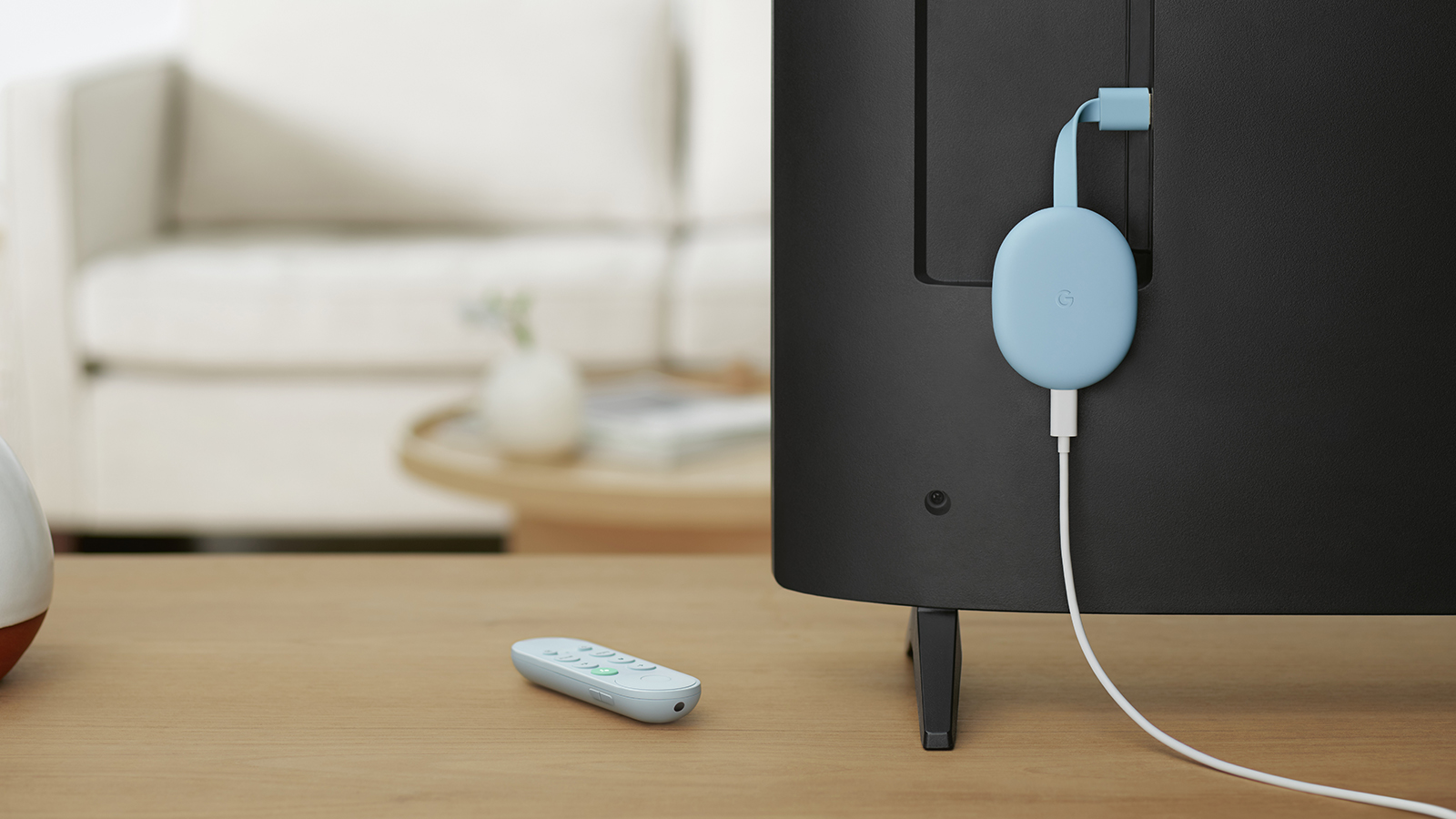Chromecast's free Android 12 update will make films look better, with the right TV
The frame-rate matching feature is a big one for film buffs

The Chromecast with Google TV is now able to receive an update to Android 12, which adds a collection of new features, including an option that will be especially welcome to movie lovers.
The upgrade is rolling out now (via FlatpanelsHD) and includes more privacy features, security upgrades, options to control HDR and surround sound format settings, and frame-rate matching.
The last of these is the big one – we'll explain the technical details further down, but it will mean that the Chromecast can change from its standard 60 frames per second video output to 24 frames per second (correct for movies) on the fly whenever you start a film. This means that you can have smooth cinematic motion on your TV without needing any motion processing… as long as you have a 120Hz TV.
If you don't have a 120Hz TV, then this won't make any difference (again, we'll cover why in a moment), but most new mid-range or premium TVs these days have a 120Hz screen.
The Apple TV 4K has had this feature for a while, and it's one of the reasons we rate it as the best streaming device overall – so this update helps the Chromecast to catch up despite being much cheaper.
Beyond the above, the Android 12 update promises to squash bugs and enhance performance of the 4K Chromecast with Google TV if you update. (The newer, cheaper HD Chromecast with Google TV came with Android 12 already on it.)

Analysis: 24fps and 120Hz explained
Getting the perfect cinematic motion on a TV is all about timing. Movies are made at 24 frames per second. Older or cheaper LCD/OLED TVs refresh (ie, show a new image on) their screen 60 times per second.
Get daily insight, inspiration and deals in your inbox
Sign up for breaking news, reviews, opinion, top tech deals, and more.
Quick mathematicians will immediately see the problem here: 60 does not divide neatly by 24. This means that it's impossible for the timing of the frames of the movie to sync up perfectly with how often the TV shows a new image, so some movie frames will be shown for longer than a 24th of a second, and some will be shown for shorter.
You can really notice this during any slow, consistant movement, such as a camera panning across a landscape – instead of looking smooth, it'll be slightly juddery, because the timing from frame to frame isn't equal.
This is why you generally shouldn't turn motion processing all the way off on these TVs – at a low level, it should help to minimize this judder.
However, the introduction of 120Hz TVs gave us a way to end this. 120Hz TVs refresh their screens 120 times per second, which means they're compatible with anything that used to work at 60 frames per second (since it's a neat doubling of the refresh rate), but they can also sync up perfectly with 24fps films, because 120 does divide neatly by 24.
So in theory, with a 120Hz TV you can watch 24fps films and turn the motion processing off to get natural cinematic motion.
However, that only works if what you're getting from your streamer is actually 24fps – but many send the video over HDMI at 60fps, because that makes life easier with 60Hz TVs. This means that even if you have a 120Hz TV, you still don't get the benefit of natural film motion – though some TVs had a feature designed to recover the original 24fps motion as well as possible (on LG TVs, this is called 'Real Cinema' for example).
So the point of the Chromecast's 'Match content frame rate' feature is to make the streamer switch its output from 60fps to 24fps over HDMI when it detects that you're watching a movie, and switch back to 60fps for TV shows or anything else.
Finally, you can enjoy the motion of a film the way it was meant to be, on one of the best TVs or best 4K projectors, with your 4K Chromecast.

Matt is TechRadar's Managing Editor for Entertainment, meaning he's in charge of persuading our team of writers and reviewers to watch the latest TV shows and movies on gorgeous TVs and listen to fantastic speakers and headphones. It's a tough task, as you can imagine. Matt has over a decade of experience in tech publishing, and previously ran the TV & audio coverage for our colleagues at T3.com, and before that he edited T3 magazine. During his career, he's also contributed to places as varied as Creative Bloq, PC Gamer, PetsRadar, MacLife, and Edge. TV and movie nerdism is his speciality, and he goes to the cinema three times a week. He's always happy to explain the virtues of Dolby Vision over a drink, but he might need to use props, like he's explaining the offside rule.